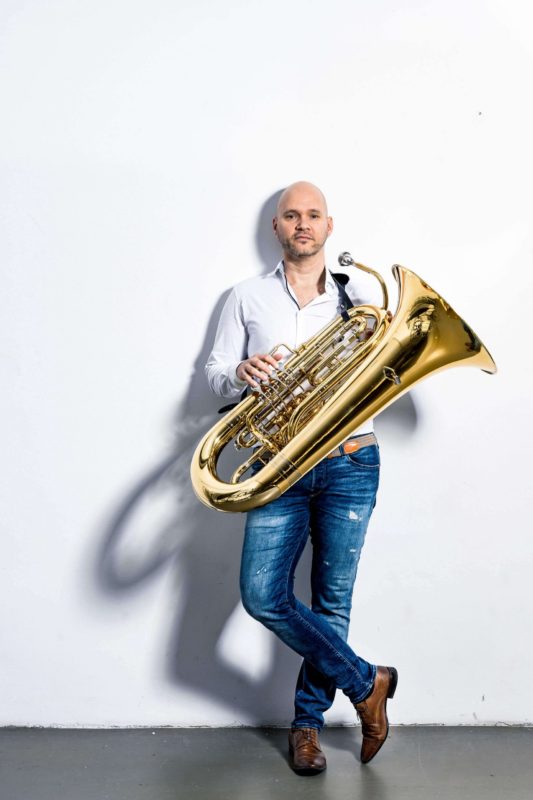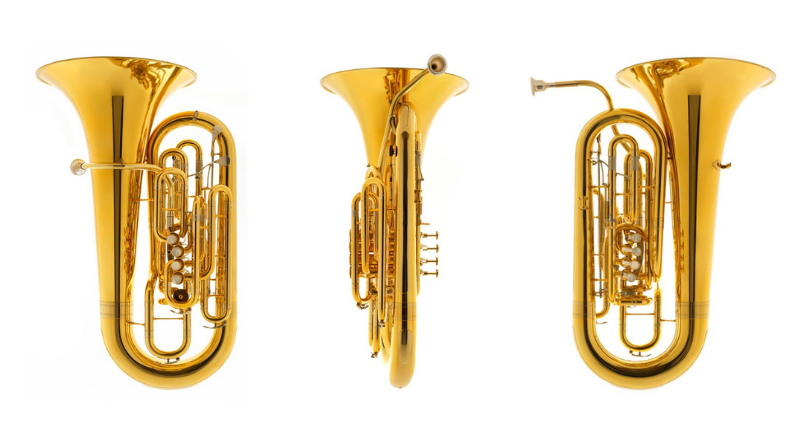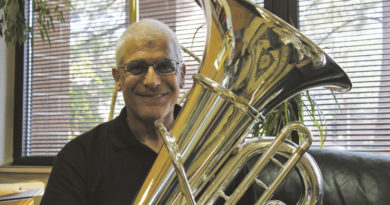TWOBA: A Hungarian Innovation To Support Tuba Soloists
Press Release
Twoba: The long-expected answer after 50 years
A Hungarian innovation to support tuba soloists
Since the tuba was invented, no such improvement has ever emerged as the innovation
introduced by Roland Szentpáli and Zoltán Juhász that shall revolutionize the instrument. The newly developed mechanism now allows musicians to play the tuba stand-up and move freely on stage. The conversion from the traditional to the standing positioning takes only two and a half minutes. The significance of this invention is manifested by the German seventh-generation luthier, Gerhard Meinl’s involvement in the world patent and distribution.
The tuba was patented on September 12, 1835, and likewise the other brass instruments, only its piston system got developed, as well as it was enlarged in size to fit the open-air brass band expectations, namely to project a louder sound. It was not until the mid-twentieth century – when the core of the tuba solo repertoire was composed by Paul Hindemith, Ralph Vaughan Williams, and Krzysztof Penderecki – the tuba could gain a remarkable solo role. Just before the millennium, it was another outstanding composer, John Williams who composed a concerto paving the way further on for the tuba to become recognized as a solo instrument and reach wider audiences. Nowadays, tuba players own the most adequate technical and musical skills to perform recitals or to play as soloists accompanied by an orchestra. However, due to its weight and holding, the tuba could only be played in a seated position throughout its evolution. It may not appear to be a significant problem as the cello and the piano are also played like this, but a major difference in the case of the tuba is that it covers the musician’s face almost completely, as well as it is very difficult to move with it during the performance.
“As a soloist, I have been struggling for decades that I had to remain seated at all concerts and had only to choose between two inconvenient, static positions. If I sit down facing the audience, they can see half of my face, therefore I can establish some contact with them, though quite limited, but then the bell of the tuba is directed towards the rear corner of the stage so they cannot hear me well. If I sit down sideways, the sound is reflected from the ceiling so the audience can hear my performance much better, but then in turn it becomes almost totally impersonal since only a few of them can see my face, only from one side. Moreover, the performer cannot communicate with the conductor and the other musicians because of the static, almost immobile position that extremely narrows down the soloist’s expressivity. We have been working with Hungarian, French, and German makers for years in order to find a solution” – says tuba player and composer Roland Szentpáli, who was the first Hungarian soloist to achieve outstanding (international) success with this instrument.

Finally, based on the tuba player’s ideas, Golden-laureate instrument maker Zoltán Juhász has developed a new piston system that reforms the holding position of the instrument so that the player can perform stand-up. All is achieved by adding only one part to the tuba which can be installed subsequently to any instrument of a similar system. The innovation enables the musician to move freely on stage while requiring only minimal balancing. It also provides a full view of the conductor, without covering the face, and in the meanwhile, the tuba is targeted on the audience.
The greatest invention of the introduced mechanism is that the pistons are reversed from pushing to pulling movement, consequently, the mechanism pulls the pistons into the tubes upwards from the bottom which is completely opposite to the traditional direction. This makes it possible to turn the instrument 180 degrees that results in the bell facing the audience during the performance. Furthermore, the conversion from the traditional to the new positioning requires a musician only a two-and-a-half-minute installation.
Gerhard Meinl, representing the seventh generation of a German family of instrument makers, the former owner of Wenzel Meinl GmbH, says that this innovation is the largest improvement since the patent of the tuba. The German expert who has built the most prominent tuba-making company of the world from a family manufacture is supporting the Hungarian innovation as a patron. The manufacturing of the new reversing mechanism is taking place in Hungary by a Hungarian company, professional and quality supervision is ensured by Zoltán Juhász and Roland Szentpáli. The installation of the new part to a Meinl Weston 2250 type tuba will be simple to carry out by any instrument repair specialist all over the world. Since recently developed, the part requires further adjustments due to differences in fixing and minimal alternations in size in case of any other types of tubas.
Source: twoba.hu / Roland Szentpáli




